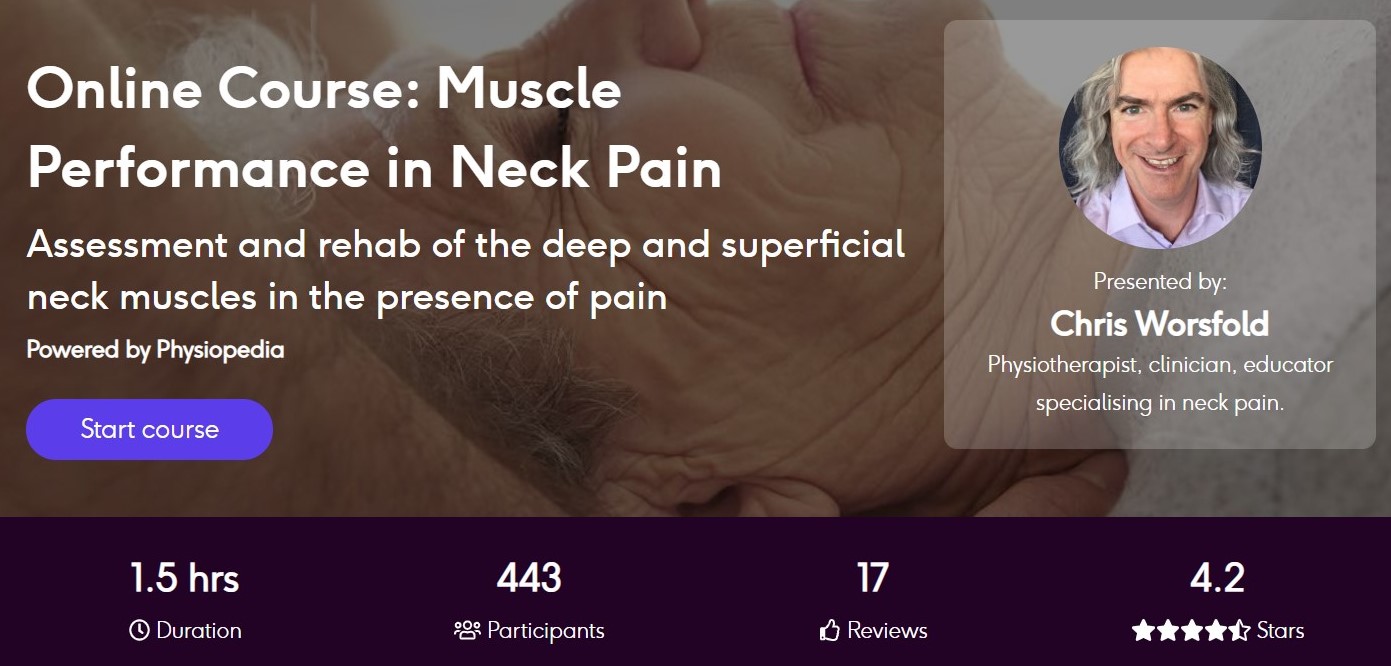Muscle energy techniques are a form of manual therapy that uses active muscle contraction to relax the muscles via various mechanism. It is often used in treatment plans for neck pain but how does it compare to other forms of manual therapy?
Non-specific neck pain affects a huge proportion of the general population and cuts across socioeconomic divides affecting 80% of people during their lifetime. It is often multifactorial in nature and can be acute or chronic.
Most non-specific neck pain responds to conservative treatment (once red flags have been ruled out) however there is a lack of consensus around which treatment is best. From a medical perspective NSAIDs and analgesics are most frequently used with the mainstay of treatment being physiotherapy.
Take Your Knowledge of the Neck to the Next Level
There are many treatment options in the physiotherapy toolkit to mange neck pain. Manual therapy is often high up the list for many clinicians, with muscle energy techniques (MET) being an example. But what’s the evidence for the use of MET, is it more or less effective than other forms of manual therapy?
A new systematic review published in Healthcare (Basel) aimed to compare the clinical effects of MET with other manual therapy or rehab treatments for acute and chronic neck pain and answer this clinical question.
Methods
Although this systemtic review adhered to PRISMA guidance it was not pre-registered on PROSPERO meaning there is reduced transparency and room for potential reporting bias within the findings. It also means there is less opportunity to try and replicate findings to assess for other forms of bias.
The literature search was conducted in early 2020 and used five databases; Pubmed, Medline, PEDro, Cochrane Database and Google Scholar. This is more than adequate according to best practice.
Keywords used were “muscle energy technique AND/OR neck pain AND/OR upper trapezius trigger points, MET AND/OR neck pain AND/OR upper trapezius trigger points.
All clinical trial types published in English or Italian between 2010 and 2020 were included. Participants had to be 18 or over and outcomes of studies had to include one of the following; neck pain, disability, joint function and quality of life.
Two authors assessed for risk of bias using Cochranes Domain-Based Evaluation Framework and methodological quality using the PEDro scale. Any disagreements about article inclusion or quality was resolved by discussion until consensus was reached.
Results
In total 21 studies were included within the qualitative analysis with 15 investigating acute non-specific neck pain and six investigating chronic non-specific neck pain. In total 913 participants were included within the review (527 females and 386 males) with an average age of 32 (18-55).
The average methodological quality of the studies included within the review was 6.9/10 on the PEDro scale. The risk of bias was low for five of the studies and high for 17 with the most frequent source of potential bias being performance bias.
Acute Neck Pain
In one study MET was compared to trigger pointing of the trapezius in two grou;s of 15 participants. Trigger pointing was more effective at reducing pain whereas MET was more effective at increasing ROM. This was also found to be the case in another study by Kirthika et al which was also a study involving two groups of 15 participants. However a larger study of 52 patients found MET to be no more effective than myofascial release.
Nagrale et al, a single blinded RCT involving 64 participants, and the most robust study investigating MET in conjunction with other manual therapy, demonstrated that MET was most effective when used in conjuction with myofascial release techniques. This is very much the picture across the other studies included, there is little evidence to suggest using MET alone when treating acute non-specific neck pain.
Chronic Neck Pain
The picture of MET being a treatment which should be used in conjunction with other treatment techniques, if at all, continues for the management of chronic pain too. In a study by Jeong et al there was no difference between MET, passive stretching and massage when it comes to improving pain, ROM or stiffness.
A similar outcome was found in a study by Sadria et al which compared two groups of 32, one recieving MET the other myofascial release. When it comes to comparing exercise and MET studies including exercise and MET were more effective however studies were poor at reporting what was meant by exercise making it very difficult to draw firm conclusions.
Summary
Overall studies investigating MET appear to lack enough power and rigour to draw firm conclusions on its’ effectiveness. If used as a treatment for non-specific neck pain with should be used in conjuction with guideline treatment, if at all. It should not be used as a sole treatment that we can be sure.
